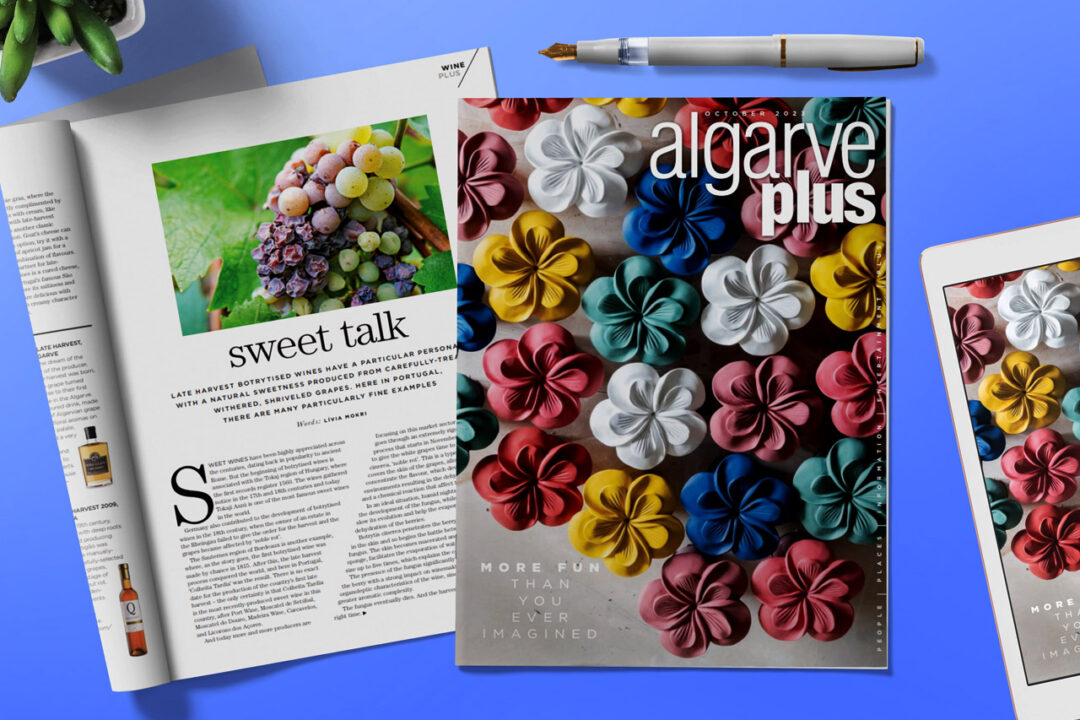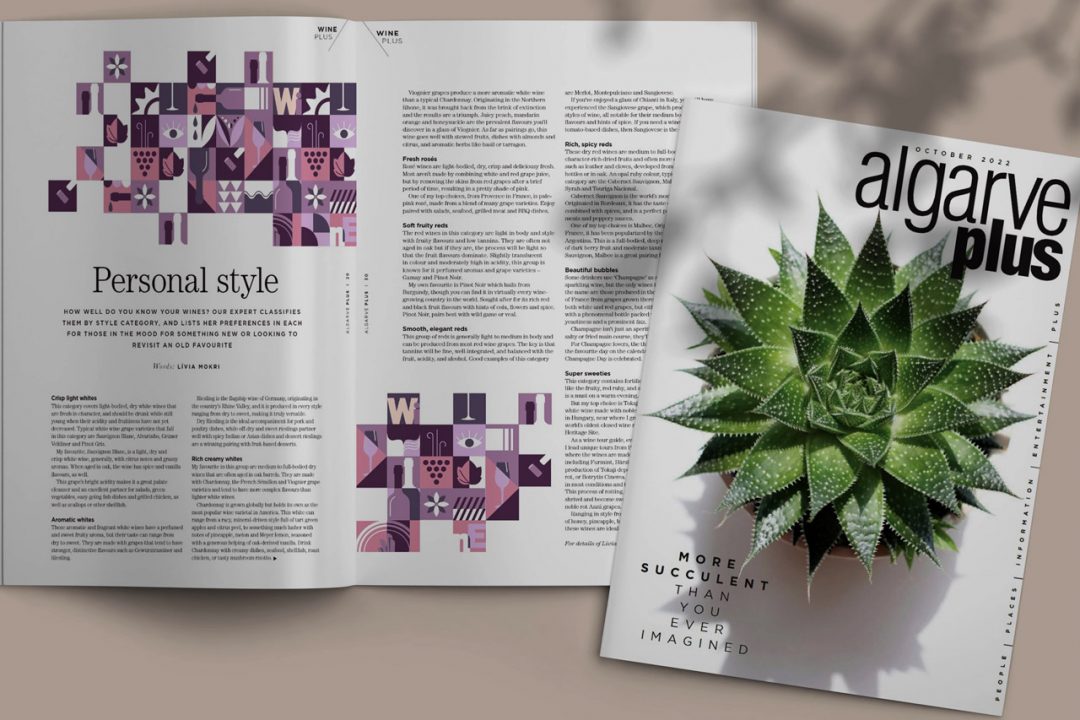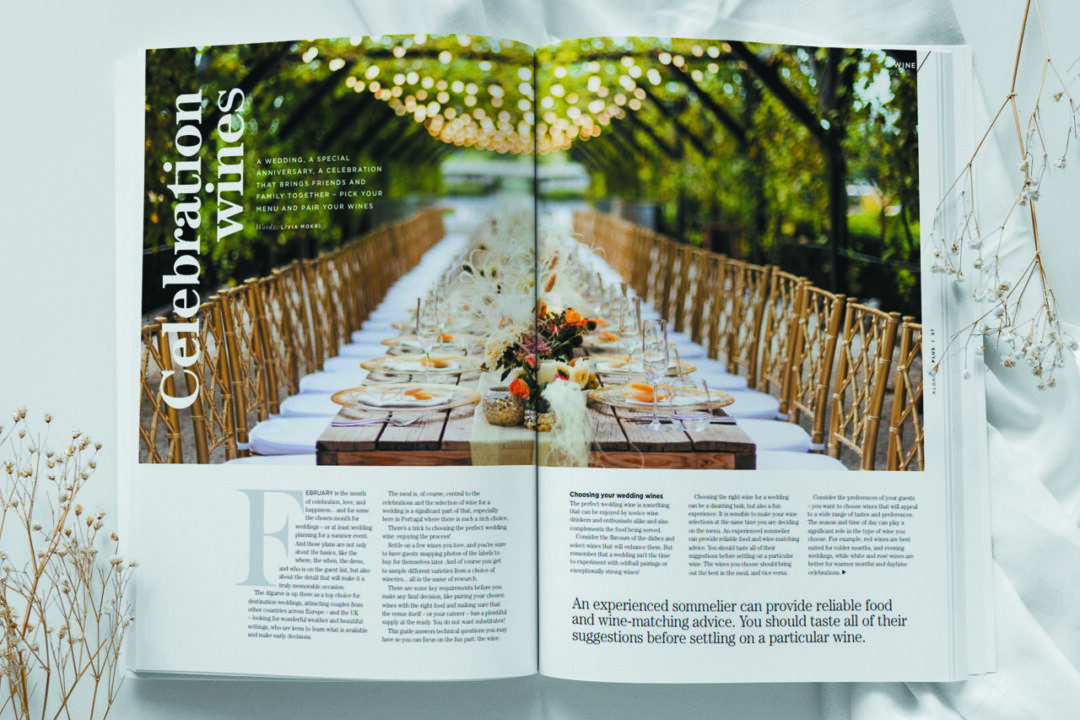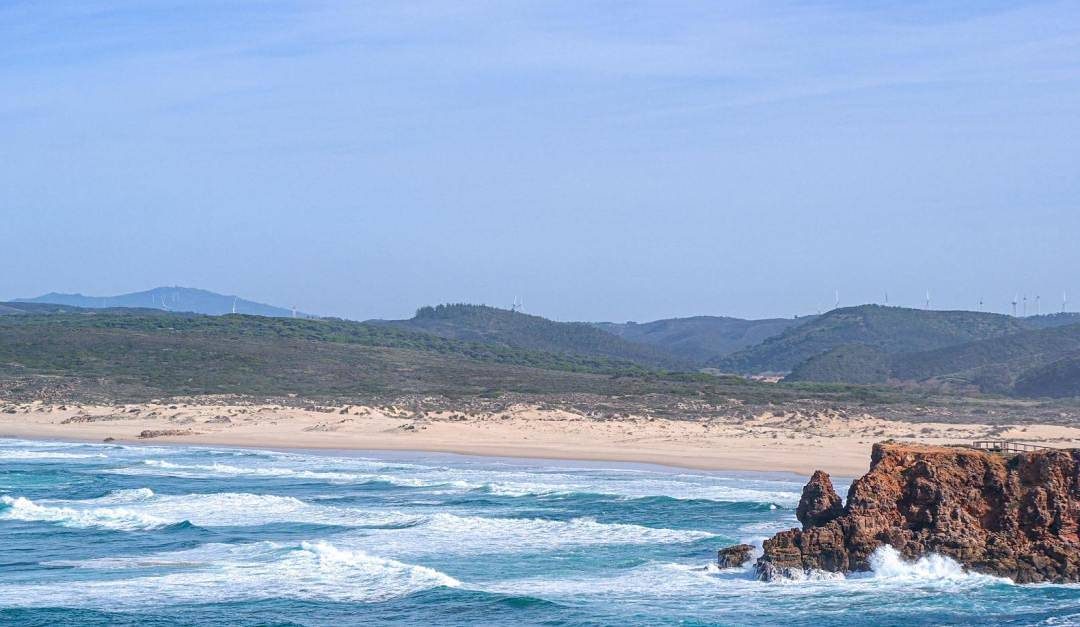Sweet Talk – Late harvest botrytized have a particular personality with a natural sweetness produced from carefully-treated withered, shriveled grapes.
All in all, the late-harvest wines have great fame, and demand and can even cost small fortunes. Here in Portugal, we already have high-quality late-harvest wines at attractive prices. Discover them now with me!
I am happy to share that the October issue of the Algarve Plus Magazine has already been published, with my new writing!
The magazine is readable online or downloaded for free here.
Enjoy!
Or read here the whole article:
Sweet Talk
In human history, sweet wines were highly appreciated in various periods, starting with ancient Rome.
But the beginning of botrytized wines is associated with the Tokaj region of Hungary, where the first records date back to 1560. The wines gained notoriety in the 17th and 18th centuries and today Tokaji Aszú is one of the most famous sweet wines in the world.
Germany also contributed to the development of botrytized wines in the 18th century, when the owner of an estate in the Rheingau, forgot to give the order for the harvest and the grapes ended up being affected by noble rot.
And the Sauternes region of Bordeaux is another classic example, where, as the story goes, the first botrytized wine was made by chance in 1815.
After this, the late harvest process conquered the world, and so did Portugal, where it is called ‘Colheita Tardia’.
There is no exact date for the production of the first late harvest in Portugal. The only certainty is that it is the most recently produced sweet wine in this country, after Port Wine, Moscatel de Setúbal, Moscatel do Douro, Madeira Wine, Carcavelos, and Licoroso dos Açores.
And the truth is that there are more and more producers betting on this market segment and on a wine that goes through an extremely rigorous production process that starts in November or early December because there is a need to give the white grapes time so that they can be affected by ‘Botrytis cinerea’, popularly known as ‘noble rot’. This is a type of fungus that covers the skin of the grapes, allowing them to concentrate the flavor, which develops in humid environments, resulting in the dehydration of the berries, and which causes chemical reactions that affect the acidity and sugar.
In an ideal situation, humid nights and morning fog allow the development of the fungus, while sunny and dry days slow its evolution and help the evaporation of water and dehydration of the berries.
Botrytis cinerea penetrates the berry through microcracks in the skin and begins the battle between the plant and the fungus. The skin becomes macerated and thinner, it works like a sponge, facilitating the evaporation of water; the berry decreases in size up to 5 times, which explains the concentration of sugars.
The presence of the fungus significantly alters the composition of the berry with a strong impact on winemaking and, above all, on the organoleptic characteristics of the wine, since the noble rot induces greater aromatic complexity.
The fungus eventually dies. And the harvest has to take place at the right time.
Grapes and winemaking
In Portugal, it is not easy to find a place where the right conditions are met for the development of noble rot.
Here, the Sémillon grape variety (the synonym Boal) is used a lot, especially in the Douro. Arinto and Fernão Pires are also options. In Dão the Encruzado is in partnership with Malvasia Fina, sometimes with Furmint and Viognier. Vinho Verde bets on Avesso, which gives a very particular character to the late-harvest-wines.
Although European legislation establishes 45 g/l of sugar as the minimum limit for a wine to be considered sweet, the sugar content of Colheita Tardia in Portugal varies between 80 and 160 g/l approximately.
And the result is a sweet wine, with a very peculiar bitterness, aromatic and long, which provides an excellent gastronomic experience. These wines, despite being known for their longevity, should be enjoyed fresh, at a temperature of 10-12 ºC.
Pairing suggestions
One of the classic pairings for these wines is foie gras when the wine is served chilled. Combining such an intense flavor with high-fat content, it is necessary to ensure intensity and concentration in the flavor of the wine with high acidity.
Desserts with cream or fruit such as creme brûlée or apple pie (which always has an acidic component that calls for a more present acidity in the wine) are also pairing well with late-harvest wines.
From the world of cheeses, Roquefort is another classic combination. The goat cheese can also be an option, even with apricot jam. Or try this wine with any cured cheese such as from the one of São Jorge island, where the salty and spicy cheese is harmonized by the creaminess and sweetness of the wine.
All in all, the late-harvest wines have great fame, and demand and can even cost small fortunes.
In Portugal, we already have high-quality late-harvest wines at attractive prices. Discover them now with me!
Grandjó Late Harvest, from Douro
Real Companhia Velha in the Douro owns a beautiful Quinta located in the small village of Granja de Alijó. The brand Grandjó was created through a fusion of both words: Granja and Alijó, and became the company’s oldest active brand.
On this vineyard, the morning fog is followed by hot and humid afternoons presenting the ideal conditions for the development of the Botrytis Cinerea fungus.
This wine was made from carefully selected Semillon grapes affected by noble rot. And the result is a sweet and unctuous wine with very fine glyceric notes and a long life that can last up to 15-20 years.
KO – Late Harvest, from Algarve
Quinta do Barranco Longo was founded in 2001 in the Algarve. Dedicated to the production of still and sparkling wines, the producer bets on the careful selection of national and international grape varieties, taking advantage of the good local terroir, the Mediterranean climate, and the great sun exposure.
This sweet white wine is a blend made from sundried grapes of Moscatel, Viognier, and Chardonnay varieties. It owes its freshness and sweetness to the dehydration resulting from the natural ripening of the grapes in the vineyard. After the alcoholic fermentation in stainless steel vats, the wine aged for two years in Hungarian oak barrels.
The result is a full-bodied white wine with a beautiful amber color. Aromas of honey and apricot on the nose. Fruitiness of fig and a hint of orange peel on the palate, with excellent acidity which reduces the sweetness of the wine, ensuring excellent durability and freshness.
The name ‘KO’ refers to Knockout providing that winning punch for the perfect end to an exceptional meal.
Dona Ermelinda Late Harvest, from Setúbal
Casa Ermelinda Freitas has been dedicated to wine production since 1920, in its vineyards which are located in Fernando Pó, a privileged area of the Palmela region.
This wine, made from the Sauvignon Blanc grape, presents a golden-yellow color. Earthy aroma with notes of honey on the nose. On the palate, it is full and sweet, with a balance between acidity and sugars, making it a fresh wine, with a persistent and pleasant ending.
Vinha d’Ervideira, from Alentejo
Ervideira is a family project in the Alentejo region, producing wine since 1880. Since the beginning of their production, they have had the mission to create truly unique and exclusive wines.
One of them is this late-harvest wine made from the Antão Vaz grape variety. Intense aroma of dried and tropical fruits, figs, marmalade, and honey, with some citrus notes on the nose. And on the palate, it reveals a pleasant sweetness and an interesting volume with elegance. Balanced and vibrant acidity in a long finish.
João Clara Late Harvest, from Algarve
As the fruit of the dream of the eldest daughter of the producer, João Clara’s late harvest was born, where the white grape turned to gold giving rise to their first late-harvest wine in the Algarve.
This golden-colored drink, made from a mixture of Algarvian grape varieties, shows floral aromas on the nose. On the palate, a sweet start and a very refreshing finish. Wine to start or end a meal great to accompany desserts.
Ortigão Late Harvest 2009, from Bairrada
The history of Quinta do Ortigão dates back to the end of the 19th century when the Alegre family, with deep roots in Bairrada, started producing sparkling wine. Since then, the family has been dedicated to the production of sparkling and table wine in the heart of the region.
This wine was produced from the manually harvested and carefully selected Arinto and Cercial grapes, in their advanced stage of ripeness, but without rot. The crystalline golden-colored wine presents aromas of candied fruits, with crunchy acidity on the palate.






Anotida Nyashanu
Great information,and this gives me the drive to pursue more knowledge about wines. Thank you